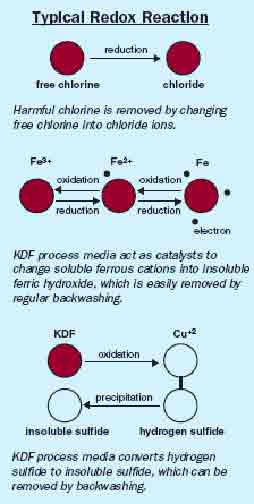For USA and International Enquiries 1(775) 324-2400 24/7
Espanol (Rudy Altamirano) 1(760) 207-6801
Ionlife Whole Home Systems
What is chlorine?
Chlorine is a naturally occurring element that can be found on land and in the sea. Typically, chlorine is a gaseous form (heavier than air) but when processed at the correct pressure and temperature it can be formed into a liquid. You are generally not in danger of exposure to chlorine from natural sources.
How is it used?
Some common uses of chlorine include:
Manufacturing: Suppliers of paper and cloth products use it as a bleaching agent.
Chemical weapons: Chlorine gas, also known as bertholite, was first used as a weapon in World War I by Germany on April 22, 1915, in the Second Battle of Ypres. More recently, in Iraq, chlorine gas was used by insurgents to terrorize the local population and coalition forces. For example, on March 17, 2007, three chlorine filled trucks detonated in the Anbar province killing 2 and sickening over 350.
Cleaning products: Many commonly used cleaners have chlorine as a disinfecting/bleaching ingredient.
Swimming pools: Due to the very powerful oxidizing properties of chlorine, it is very effective at disinfecting large bodies of water.
Drinking water: Water borne diseases can be eliminated with the appropriate dosage of chlorine. Virtually every municipality in the U.S. uses chlorine in drinking water supplies.
What are the health effects?
Depending upon the strength of chlorine and length of exposure it is corrosive and irritating to soft tissues, especially eyes, skin and respiratory tract. Exposure to low amounts may cause; sore throat, eye and skin irritation and coughing. In high volumes, chlorine can cause narrowing of bronchi, blue coloring of the skin and even death.
Common exposure to chlorine occurs in swimming pools, drinking water and showers. In some cases, people can be allergic to chlorine and cannot drink tap water or bathe in traditional tap water. In this case, additional treatment is needed prior to drinking and additives are used to neutralize chlorine while bathing/showering.
Is there any harm from drinking and bathing in chlorinated water?
"Cancer risk among people drinking chlorinated water is 93% higher than among those whose water does not contain chlorine."
US Council of Environmental Quality
"Chlorine is the greatest crippler and killer of modern times. While it prevented epidemics of one disease, it was creating another. Two decades ago, after the start of chlorinating our drinking water in 1904, the present epidemic of heart trouble, cancer and senility began."
Saginaq Hospital - Dr. J.M. Price
"The drinking of chlorinated water has finally been officially linked to an increased incidence of colon cancer. An epidemiologist at Oak Ridge Associated Universities completed a study of colon cancer victims and non-cancer patients and concluded that the drinking of chlorinated water for 15 years or more was conducive to a high rate of colon cancer."
Health Freedom News, January/February 1987.
"Scientists discovered that chlorine reacted with organic material in water to produce hundreds of chemical by-products, several of which have proved in animal studies to be carcinogenic."
U.S. News and World report - July 29, 1991
"Drinking chlorinated water may as much as double the risk of bladder cancer."
National Cancer Institute - Kenneth Cantor
"Long-term drinking of chlorinated water appears to increase a person`s risk of developing bladder cancer as much as 80%," according to a study published in the Journal of the National Cancer Institute. Some 45,000 Americans are diagnosed every year with bladder cancer.
St. Paul Dispatch & Pioneer Press, December 17, 1987.
"Although concentrations of these carcinogens are low...it is precisely these low levels which cancer scientists believe are responsible for the majority of human cancers in the United States."
Report Issued By The Environmental Defense Fund
Greenpeace reports have found chlorine-based compounds to be the most common toxic and persistent pollutants in the Great Lakes.
"Drinking tap water that is chlorinated is hazardous if not deadly to your health."
Healthy Water for Longer Life - Dr. Martin Fox
"The cause of atherosclerosis and resulting heart attacks and strokes is none other than the ubiquitous chlorine in our drinking water."
Coronaries/Cholesterol/ Chlorine - Dr. J. M. Price
How do I remove chlorine taste and odors in drinking water?

The most effective way to economically reduce chlorine taste and odor in water is through the use of granular activated carbon (GAC).
The unique properties of carbon that are most beneficial in water treatment are its extremely high surface area and its electro-positive charge. One pound of carbon contains the surface area of 125 acres and can absorb literally thousands of different chemicals. Acting like little magnets, GAC attract poor taste and odor producing compounds resulting in great tasting, healthier water throughout the home.
GAC has been certified to remove or reduce many volatile organic chemicals such as chlorine, benzene, trihalomethanes, radon, solvents and hundreds of other man-made chemicals found in tap water.
How does Ionlife`s whole home system work?
What makes Ionlife`s system different?
b) Rust-proof construction of tanks with stainless steel exterior:
Ionlife`s high quality fiberglass tank prevents the creation of rust in drinking water caused by the tank. Our attractive stainless steel exterior shell looks great in any location. Other models on the market offer metallic tanks or fiberglass tanks without the stainless steel exterior.
c) Heavy metal reduction:
Ionlife`s system also includes the industry standard for heavy metal reduction, KDF. Used for decades in the industry, KDF also provides enhanced chlorine reduction and bacteriostatic benefits. KDF Fluid Treatment`s unique combination of copper and zinc (Redox) creates an electro-chemical reaction. During this reaction, electrons are transferred between molecules and new elements are created. Some harmful contaminants are changed into harmless components. Some heavy metals like copper, lead, mercury, amongst others, react to the medium`s surface, thus being effectively removed from the water supply. The Redox reaction also helps to control bacteria growth.
To find out more please contact an Ionlife Specialist for an obligation free consultancy.


